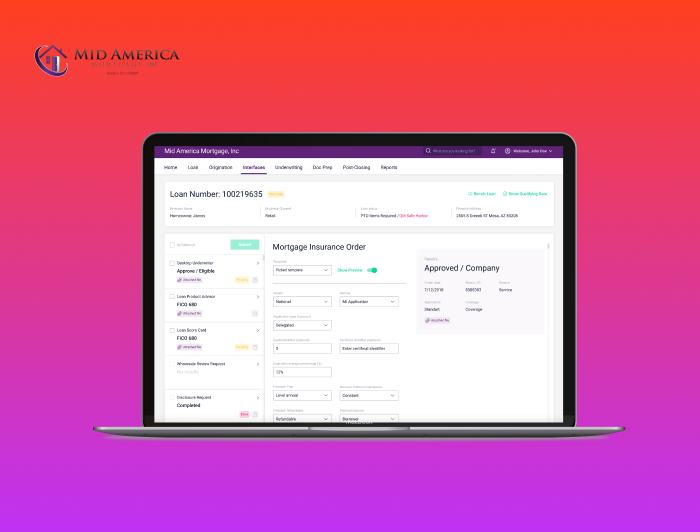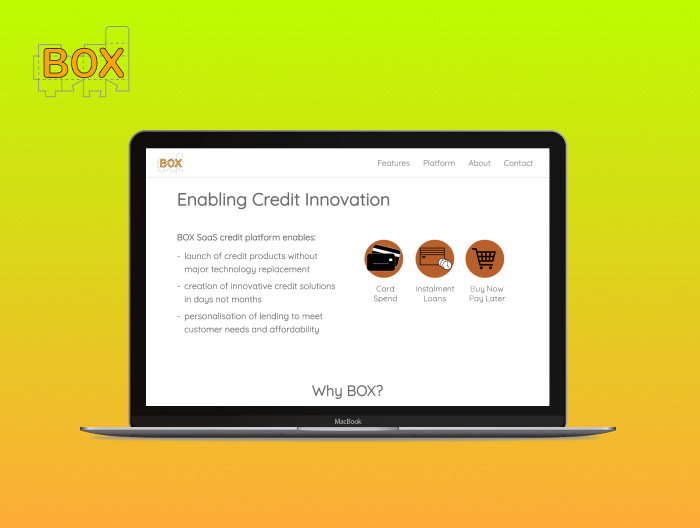
Top Fintech Trends to Follow in 2022: Neobanks, Open Banking, Digital Wallets, Regtech, & More
The pandemic years provoked a crisis in many industries, but 2021 was still a strong year for growth in the fintech industry. The new realities have become an incentive for financial software development and digital services because due to quarantine measures, many banks and insurance companies had to close their physical branches temporarily. 2021 was a challenging year and now everybody expects 2022 to save our weary souls and bring fervent hope for a better future. While we might not know the shape the Fintech industry will take in the next few years, there are for sure some improvements awaiting us in the financial development sector. Our payments will become even more rapid, efficient, and secure.
Fintech has started a new leap of its history in 2022, as the fintech industry trends soar high with neobanks and open banking. Seemingly simple, yet intricate, technologies will change the way people pay once and forever. The fintech industry has already changed our perception of how money works. Nonetheless, it is still interesting to find out what fintech trends we are to expect in the next years.
Content Outline:
- Omnipresent Digitalization
- Companies United
- Extending the Limits
- Neobanking & Digitalization
- More Cybersecurity Required
- Biometric-Based Security
- Real-Time Data Reliance
- Applying Behavioral Science
- More Payment Options
- Open Banking
- Blockchain Development
- Conversational Banking
- Digital Wallets on the Rise
- Accessibility by Voice
- Increased Governmental Control Over Cryptocurrencies
- Regulatory Technology (RegTech)
- Robotic Process Automation (RPA)
Defining Fintech
Before we cut to the chase, let us clarify that while many people might have at least heard about fintech or even used it in their daily lives, it seems like not everyone understands what fintech is. Here comes a succinct and yet comprehensive explanation.
Fintech stands for Financial Technologies, an industry that is nowadays altering the obsolete banking system into open banking, making payments easier and faster to both send and receive.
Speaking plainly, fintech is the set of computer and mobile software used to enable financial and banking services. Hence, if you think you have nothing to do with the fintech technology trends, think about the last time you checked your banking app to check your card’s balance.
Why Fintech Matters
Fintech is ubiquitous already, and it will expand its presence and impact even more in 2022. Every business longing for development and growth will surely pay enough attention to the fintech trends such as digital wallets, regtech, and lending software that will rock the world of finance in the next few years.

Yes, words are nothing but letters, but here are some statistical data to back our statement. An Accenture report, published back in 2019, claims that Fintech fundraising grew strongly in most major markets, and fundraising into challenger banks more than tripled. The value of deals in the U.S. jumped 54%, to US$26.1 billion.

In the U.K., fintech investments rose 63%, to US$6.3 billion — almost the same as the total for 2018 and 2017 combined. Other European markets also made significant strides, with investments in German fintech up 83% in 2019, to US$1.5 billion, and fundraising in Sweden jumping more than seven-fold, to US$1.3 billion from about US$175 million.

These are signals that investors remain confident about the future growth and demand for innovative digital solutions for banks, insurers, and payments providers. The fintech industry has been up to some development over the last five years as well. Guess what, the coronavirus pandemic has had a reverse effect on it, as the 2020-2025 forecast looks completely cloudless for the fintech industry.


Mobile payments, neobanks, open banking, online signatures, digital wallets, salary projects, lending software, regtech, and charitable donations. The list can go on and on, as the fintech industry gradually enters every single aspect of our lives, and there’s no stopping it. Hence, you’d better come to fintech before fintech comes for you.


Top Fintech Trends to Follow in 2022 and Live By
Omnipresent Digitalization
Let’s start our chart with a trend that is obvious and yet important to mention. The world of traditional banking with its physical branches will never be the same. The seed of change has been sowed and there’s nothing to stop the progress that was long due. Financial institutions have done their homework on competitiveness and are now closing in on digitizing every single operational aspect, from financial services and management to financial products they offer.
Fintech’s business-to-customer orientation saw the first phase of digitalization finalized during the pandemic. Companies had to find a way to let their customers keep using their services while on the lockdown.
The front-end, as we say in IT, of traditional banks’ digitalization has been sealed and delivered. Meanwhile, updating the back-end functions, such as the automation of back-office procedures, will be a key fintech trend in 2022-2023.
Companies United
It was not that long ago that banks thought that the queues at their box offices were never going to vanish. People would have nowhere to go to have their funds managed. They believed that this entire fintech hoax would explode like a bubble.
Fintech technologies have become an omnipresent banking solution to financial sector customers. Now, companies are left with no other choice but to unite their ranks and establish partnerships with those developing fintech software.
It is not hard to understand that there is no way the old-fashioned banking system is coming back. Financial institutions face a relatively simple choice to make: go fintech or go down in the history records.
Regardless of how bizarre it might sound, one of the vital fintech technology trends in 2022 is the presence of more fintech trends. Modern neobanks are found amid an unwavering need for fintech solutions. Bank CEOs no longer regard them as a disruptor of the good-old system, but as a tool to preserve their customers’ loyalty.



Extending the Limits
Buckle up, and get ready for a fascinating fintech journey in 2022-2023. Next year, fintech is going places. Last years were all about making sure that the folks in the big cities can enjoy the benefits of fintech. Yet, there are still places where people struggle because they cannot access online banking or any other feature of modern financial products and services
Since the world is moving toward ubiquitous online payments, fintech has no alternative but to expand to smaller urban and rural areas.
So, we can surely admit the fintech industry expansion among the main fintech trends in 2022-2023.

Neobanking & Digitalization
Given that we have already mentioned the extension of limits, let’s stay even more truthful and acknowledge that the brick-and-mortar banks’ days are over.
Banking platforms are going online with no waste left, as the age of neobanking is looming bright on the horizon of irreversible changes. A neobank is nothing else but a bank without physical branches, that performs on the cloud premises.
You have probably heard about Internet-only banks. Well, here they come, capturing more and more customers with the exquisite level of comfort they offer.
The banking industry digitalization is set to move banks so close to the customer that they would not need to leave their homes to get a full-fledged banking service experience. Neobanking is surely going to become one of the key mediums of fintech extension in 2022-2023.
More Cybersecurity Required
More financial operations mean an enhanced security level required. As fintech becomes the core platform for global financial operations, we can surely expect the cybersecurity bar raised.
In fact, it is not that hard to understand that the software developers would need to become more aware of the fintech services their customers use. The more money goes online, the more scammers and thieves are there to make use of it.
Cyber hygiene is something to be taken care of in 2022-2023. This is not even a trend but a need for a successful fintech expansion agenda launch.
Biometric-Based Security
Without further ado, let us discuss one of the ways software developers can achieve the cybersecurity level mentioned above.
The Internet of Things is an integral part of human lives and biometric security measures are nowadays a need and not a whim. With mobile banking being largely dependent on how well its servers are protected and the double-authentication systems adapted, there is more the fintech software developers need to look right into the depth of the matter to find a fitting solution.
There is nothing more personal and unique than the biometric data that each of us holds. It cannot be copied, thus rendering biometric-based security measures is among the major fintech trends in 2022-2023.
As of now, there is no better way to take financial data security to a whole new level. Furthermore, biometric sensors are no longer deemed reliable. Expecting lots of new types of biometric data usage in the fintech industry shortly is the right thing to do. Yet, we will talk about the new biometric security solutions a bit later.

Real-Time Data Reliance
Fintech technology trends to enjoy in 2022-2023 will talk a lot about using real-time data. It will be applied to tracking down better loan and credit solutions. The obsolete tradition of scrutinizing a person’s credit history will fade away. It does not provide an accurate picture of the person’s current solvency. This is a rapidly-changing world that we are living in where tables can turn as simple as that.
The rags to riches stories are nowadays aplenty. Nobody judges people on their credit histories of the past. In recent years tracking real-time cash flows has started to impact the majority of loan decisions. What is more, there is a fervent need to understand that 2022-2025 will become the years of renewal: businesses will need loans to rebuild what they’ve lost in 2019-2021.
Applying Behavioral Science
John B. Watson invented, in the first half of the 20th century, what is nowadays called behavioral science. Yet, he did not think that behavioral psychology would become an integral part of the finance industry. Yet, it has already been proved that economics is rather a study of human behavior than money (It’s (Not) All About the Money: Using Behavioral Economics to Improve Regulation of Risk Management in Financial Institutions). It was only a matter of time before we would proceed with behavioral science patterns in fintech.
It took humanity quite some time to start analyzing the motives behind our decisions. Yet, the process has been launched and behavioral psychology currently lies at the core of many industries. Understanding people’s behavioral patterns is going to be a hit in fintech of 2022-2025.
The number of clients served by the fintech industry amounts to billions, and it will grow. Knowing your customers’ goals and behavioral models is essential. Dealing with money, you have to stay cognizant of how people act in a variety of circumstances.
Thus, we can surely expect more tech integrations dedicated to behavioral analysis in the fintech code stacks in 2022. Analyzing your customers’ innate nature is the best you can do for making the right decisions in the fintech business of the future.
More Payment Options
While this fintech trend seems to be quite obvious, there is still a need to mention it. Get yourselves ready, folks, as mobile payment options are going wide in 2022-2023. Yet again, let us all say a big “thank you” to the coronavirus pandemic, as it has fostered the need for developing new ways of paying for things. Social distancing keeps us restrained from free urban movement. Hence, if the banks want to keep their customers loyal, they have to widen the scope of mobile payment options.

Open Banking
It looks like the borders will yet be closed in 2022-2023, at least partially. Well, the exponentially rising levels of financial freedom might become a consolation we’ve all been waiting for.
Banks are no longer willing to keep their customers on the leash of their physical branches. CEOs and executives understand that as soon as a bank that offers more freedom to their customers appears, they will migrate to a provider that ensures free payments that are not shackled to one banking system.
We should expect a lot of networking between banks in the next year. The banks’ desire to stay afloat is not the only reason to mention this here. The Second Payment Services Directive (SPSD-2) leaves them no other choice. It ensures that banks share with authorized bodies the data required for creating a comprehensive financial cooperation platform that caters to the cooperation and security needs of every player in the sector.
Extensive usage of APIs and AI within open banking – one of the core SPSD-2 provisions – will bring accountability to financial operations. An increased number of prevented scams and frauds will become another benefit to enjoy.

Blockchain Development
Satoshi Nakamoto, the man who has invented Bitcoin (well, at least it was the pseudonym he used), had come up with the first blockchain theory back in 2008.
Blockchains are nowadays used as the world’s most popular ledger of cryptocurrency (and not only) transactions that anyone can trace and access. Predicting how much popularity the blockchain technologies will gain is Sisyphean labor. Yet, their presence within the fintech trends of 2022-2023 has been ensured by the major industry players’ need to adopt them.
Conversational Banking
Today’s customers have no time to stay on the line “because their call is utterly important to the bank.” They require rapid answers to their questions and issues. One of the leading fintech trends to follow in 2022-2023 will be devoted to this. Get yourselves ready for an extensive rise in the number of communication tools between banks and customers.
Everyone, regardless of their special needs, has to find those communication platforms easily accessible. If you’re already using fintech software, which is quite probably the truth, you can expect its communication features to be refined next year.
Digital Wallets on the Rise
We can easily expect digital wallets to be among the main fintech technology trends in 2022-2023 simply because people want to feel free when making transactions. The primordial era of online payments being chained to the internal system of one bank is long gone.
Using a digital wallet lets people transfer their funds wherever they find it necessary and convenient. The industry players will have to come up with an extended range of digital wallet services. Transactions facilitation can be deemed the ultimate task of the entire fintech industry for 2022-2023.

Accessibility by Voice
Millennials and the Gen Z folks will remember recent years as one of the worst years in their lives. However, there is a silver lining to this decade. It was not that long ago that society finally started talking about tolerance and accessibility.

Today’s businesses are starting to pay attention to the needs of people who suffer from having no opportunity to enjoy the benefits provided by modern fintech technologies due to a variety of reasons. For example, visually impaired individuals find it hard to use smartphones tangibly, as they cannot see the command buttons on the screen.

The developers of the world’s two most popular operating systems – iOS and Android – have already represented their voice-driven assistants, Siri and OK Google, respectively.

Meanwhile, not all the fintech software developers have yet come up with their voice-guided apps, meaning that this must become one of the fintech trends in 2022-2023. Furthermore, this is not only accessibility but people’s everyday comfort that we are talking about here.

72%
30%
According to Gartner, in 2020, about 30% of all searches were done with speech searches. Voice commerce is expected to jump to $40 billion by 2022. While the fintech industry is currently the biggest trend-setter, it should be acknowledged that there are trends that fintech itself must adhere to. Voice commands are surely one of the main fintech trends in the following years.
There are quite a few benefits associated with the usage of voice technologies in fintech. First of all, it can substitute for your company’s support department, providing the customers with all the information required regarding their accounts, and simultaneously cutting the operational cost of your business.

Secondly, as we have already mentioned the usage of biometric data as a data-protection and security tool, the customer’s voice can become a significant breakthrough in this direction. Such platforms as PayPal, Venmo, Square Cash, and others have already started implementing voice-based technologies for funds rerouting and online payments. So, welcome to a new era, where you can govern your money with your voice.

Increased Governmental Control Over Cryptocurrencies
It seems like there is no need to explain what bitcoin and cryptocurrencies are. Bitcoin and other cryptocurrencies, as well as fintech technologies, have already existed for more than ten years. Yet, nobody paid attention to them, as they were of no value to the world.
Nowadays, with fintech technologies and cryptocurrencies gradually becoming the key financial instruments, governments worldwide are starting to react. The lack of governmental regulatory legislation on the use of cryptocurrencies will be ousted by an increased number of corresponding laws and provisions passed in 2022-2023.
The fintech industry will go through a legal rehaul as it will be adopted as the key financial platform for the global economies to thrive upon.
Regulatory Technology (RegTech)
Therefore, it is crystal clear that the fintech software will have to become more compliant with each of the regulations applicable. Financial regulators oversee national economies, and every business is interested in making sure it does not violate any law or provision, as the fines might be bigger than the expenditures on having the RegTech developed.

Enormous and even mammoth volumes of fiscal regulatory documentation can be handled automatically, saving banks and other financial institutions a considerable amount of money and time.

Besides legal compliance, there are five major domains in which RegTech companies can play their part in the fintech industry in 2022-2023. As soon as an organization adopts RegTech software, its identity management, transaction monitoring, compliance software, risk management, and regulatory reporting scopes are getting refined to the bits.

As a result, a company gets its administrative staff reduced or rerouted to more human-oriented tasks, customers protected, and financial stability ensured.
Finally, the RegTech software offers a plethora of analytical tools and methods to use when defining one’s business’s strengths and weaknesses.



Robotic Process Automation (RPA)
Last but not least is the fact that banks and financial institutions will be looking dearly into becoming faster.
Artificial intelligence systems are nowadays being adopted by banks worldwide as the greatest facilitators of autonomous decisions. There is nothing to be surprised about – they are faster and more efficient than humans.
Yet, there is no mention of cutting the company’s manpower loose, as RPA is being adopted within the framework of letting people deal with more creative and higher purposes within a company.

A Round-Up
It doesn’t take much wit to understand that the fintech trends will impact everything today’s businesses are even partially related to. The fintech industry is the platform where the foundations of today’s businesses’ future are laid.
Nonetheless, with banks and financial organizations heavily reliant on today’s customers’ preferences and requirements, the fintech industry will be regarded as the tool to be used in their hunt for keeping the customers loyal.
The distant past of queues, cash payments, and deteriorated financial security vanishes into thin air as you’re reading this article. The future comes soon, and it wants you to be a part of it. The sooner you enter the fintech industry, the closer you get to stability and, what is more, predictability of your financial performance. The fintech industry trends in 2022-2023 will grant:
- More security; the implementation of neoteric biometric data is instrumental and imperative in making the fintech industry even more secure than it was.
- Increased customer satisfaction; customer orientation is the industry’s top priority in 2022-2023.
- Enhanced business stability; analytical decision-making and legal compliance are on the list of fintech goals in 2022-2023.
- More networking and cooperation; institutions are expected to make this world a place of free payments.
- More freedom; fintech aims at being a unified platform for free payments worldwide, and your customers will definitely appreciate the part you play in this endeavor.
References
Fintech Fundraising Grew Strongly in Most Major Markets in 2019, Accenture Analysis Finds
Fintech Market Size & Growth Analysis (2022-2027). Published: January, 2022
Financial Inclusion on the Rise, But Gaps Remain, Global Findex Database Shows. (2018).
The Global Findex Database 2017.Measuring Financial Inclusion and the Fintech Revolution
Packin, Nizan Geslevich, It’s (Not) All About the Money: Using Behavioral Economics to Improve Regulation of Risk Management in Financial Institutions (March 3, 2013). University of Pennsylvania Journal of Business Law, Volume 2, Issue 15, 2013 , Chicago Booth Research Paper, Available at SSRN: https://papers.ssrn.com/sol3/papers.cfm?abstract_id=2163183
Global voice recognition market size 2020 and 2026
PwC: Prepare for the voice revolution. Voice assistants report.
Voice Shopping Set to Jump to $40 Billion By 2022, Rising From $2 Billion Today
Latest Insights
Stay informed on the latest updates and trends to follow in financial services, digital transformation and software development from NerdySoft





